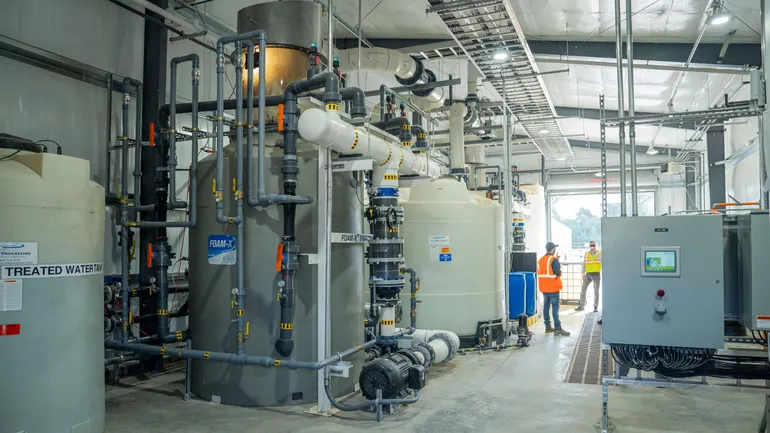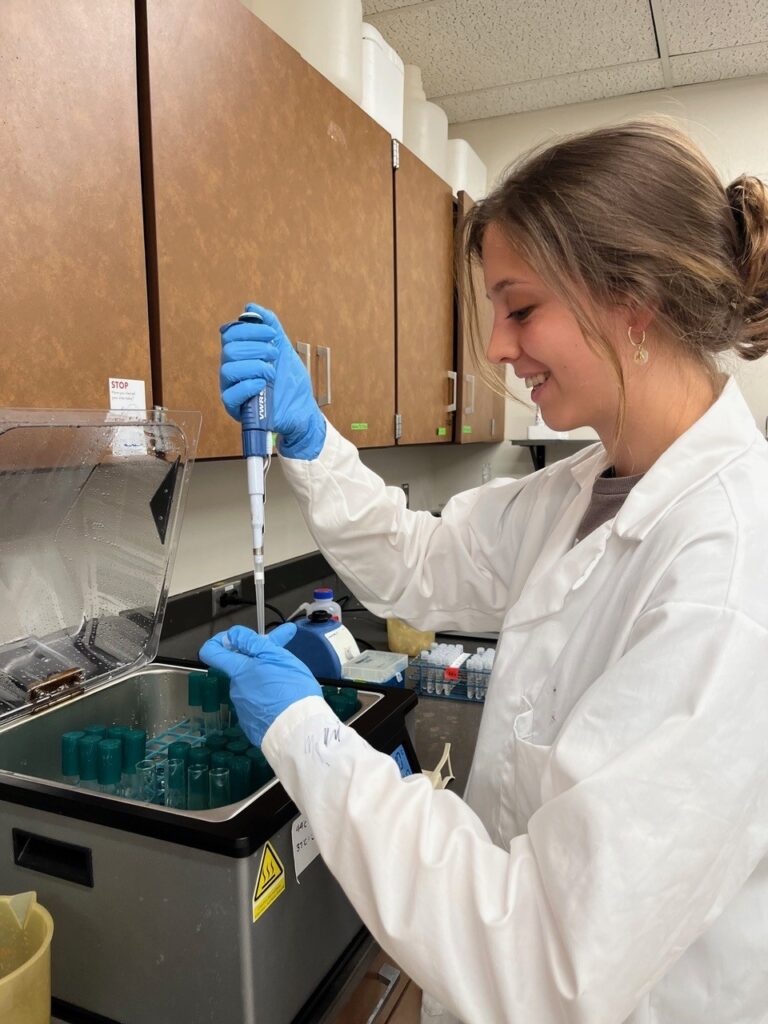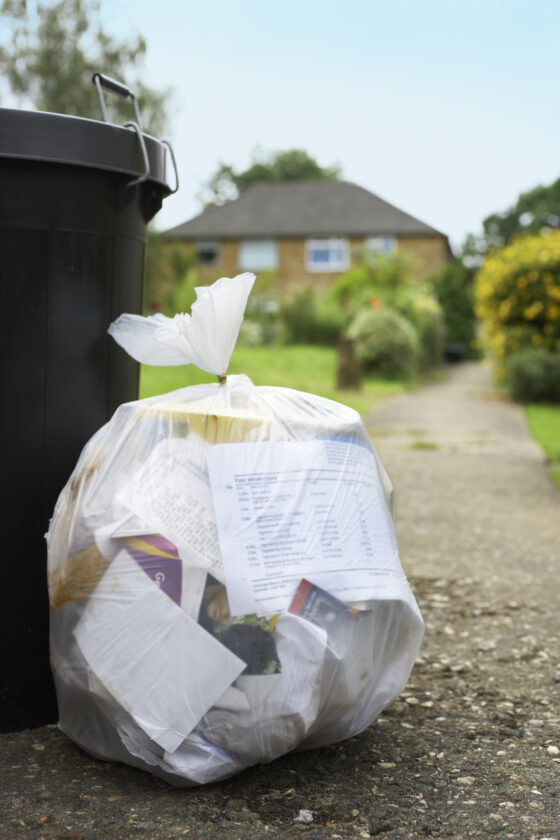Water treatment plant set for 2025 groundbreaking – Gunnison Country Times

Report on the Gunnison Water Treatment Plant Project and Alignment with Sustainable Development Goals
A report was presented to the Gunnison City Council on July 22, detailing the status and future of the city’s new water treatment plant project. This major infrastructure initiative is crucial for advancing several United Nations Sustainable Development Goals (SDGs), particularly those related to clean water, sustainable communities, and climate resilience.
Project Rationale: Securing Water for a Sustainable Future
The primary driver for the new treatment plant is the inadequacy of the current water system. This initiative directly addresses critical sustainability and public health targets.
- SDG 6: Clean Water and Sanitation: The existing system, which relies on nine wells drawing from a single aquifer, is outdated, no longer state-permitted, and highly vulnerable to contamination. The new plant will ensure access to safe and reliable drinking water by creating a redundant system that can also draw from the Gunnison River, safeguarding public health and fulfilling a core tenet of SDG 6.
- SDG 11: Sustainable Cities and Communities: By investing in resilient infrastructure, the city is ensuring its capacity to support current and future population growth. This project is a foundational element for making Gunnison a more sustainable, safe, and resilient community.
- SDG 13: Climate Action: The current system’s dependence on a single aquifer makes it vulnerable to climate-related hazards such as extended drought. Diversifying water sources is a direct climate adaptation strategy, enhancing the community’s resilience to the impacts of climate change.
Project Phases and Investment in Resilient Infrastructure (SDG 9)
The estimated $50 million project, one of the largest in the city’s history, is structured in three distinct phases. This investment represents a significant commitment to building reliable, sustainable, and resilient infrastructure as outlined in SDG 9.
-
Project One: Raw Water Intake and Wells
This phase focuses on establishing the new water sources.
- Scope: Construction of a raw water intake on the Gunnison River and three separate wells at the Van Tuyl Ranch.
- Timeline: Expected to receive EPA approval shortly, with construction beginning in 2025 and well drilling extending into 2026.
- Cost: Approximately $4 million.
- Funding Breakdown:
- $1.75 million from congressionally directed spending.
- $1.5 million from a Colorado Water Conservation Board grant.
- $850,000 from four additional grants for design costs.
- $25,000 contribution from the City of Gunnison.
-
Project Two: Water Delivery System
This phase involves creating the network to transport water from the new sources.
- Scope: Construction of a complex network of pipes connecting the intake and wells to the future treatment plant.
-
Project Three: Water Treatment Facility
This phase is the construction of the central processing plant.
- Scope: Construction of the main water treatment facility.
- Combined Timeline (Projects 2 & 3): Design completion is estimated between winter 2025 and spring 2026, with construction lasting into 2029.
- Combined Cost (Projects 2 & 3): Approximately $42.7 million ($2.7 million for design and $40 million for construction). Design costs are largely covered by grants, with construction funding to be addressed in future council meetings.
Environmental and Community Considerations (SDG 15)
The project plan includes measures to mitigate its impact on the local environment and community life, reflecting a commitment to protecting terrestrial and freshwater ecosystems (SDG 15).
- Recreational Impact: The raw water intake construction is expected to cause a temporary disruption to recreational activities like boating and fishing for two to three months.
- Mitigation Strategy: The possibility of scheduling construction during the winter is being explored to minimize the impact on summer recreation, demonstrating a conscious effort to balance infrastructure development with the preservation of ecosystem services and community well-being.
SDGs Addressed in the Article
-
SDG 6: Clean Water and Sanitation
- The article focuses on the construction of a new water treatment plant in Gunnison to ensure the provision of safe drinking water. It details the city’s efforts to move away from an “outdated” and “vulnerable to contamination” water system to a modern, reliable one. The entire project is centered on water quality and management.
-
SDG 9: Industry, Innovation and Infrastructure
- The project is described as “one of the largest infrastructure developments in city history,” with an estimated cost of $50 million. This directly relates to the development of quality, reliable, sustainable, and resilient infrastructure. The article details the design and construction phases of this major infrastructure project.
-
SDG 11: Sustainable Cities and Communities
- The new water plant is essential for the community’s long-term viability, intended to “provide safe drinking water for the current and future growth of the community.” It also aims to make the city’s water supply more resilient to disasters like “extended drought conditions,” thus making the community safer and more sustainable.
-
SDG 17: Partnerships for the Goals
- The project is made possible through a multi-stakeholder partnership involving various levels of government and agencies. The article explicitly mentions funding from “congressionally directed spending” (federal), a “Colorado Water Conservation Board grant” (state), and the “City of Gunnison” (local), with oversight from the “Environmental Protection Agency (EPA).”
Specific SDG Targets Identified
-
Target 6.1: By 2030, achieve universal and equitable access to safe and affordable drinking water for all.
- The article states the project’s purpose is to provide “safe drinking water” for the community. The current system is “outdated and no longer permitted by the state,” highlighting the need for a new system to achieve this target for the residents of Gunnison.
-
Target 9.1: Develop quality, reliable, sustainable and resilient infrastructure… to support economic development and human well-being…
- The article highlights the project’s goal of creating redundancy. The Public Works Director is quoted saying, “It’s really important for us to have redundant systems.” By building a plant that can draw water from both the Gunnison River and the existing aquifer, the city is developing resilient infrastructure to withstand threats like drought and contamination.
-
Target 11.5: By 2030, significantly reduce… the number of people affected and… direct economic losses… caused by disasters, including water-related disasters…
- The article notes that the current water system, relying on a single aquifer, is “vulnerable to contamination and extended drought conditions.” The new project directly mitigates these risks, thereby reducing the community’s vulnerability to water-related disasters.
-
Target 17.17: Encourage and promote effective public, public-private and civil society partnerships…
- The project’s funding structure is a clear example of a public partnership. The article details how costs are covered by a combination of “$1.75 million in congressionally directed spending,” a “$1.5 million from a Colorado Water Conservation Board grant,” and funds from the “City of Gunnison,” demonstrating a multi-level governmental partnership to achieve a common goal.
Indicators for Measuring Progress
-
Indicator for Target 6.1
- The primary indicator is the successful construction and operation of the new water treatment plant, which will be permitted by the state and the EPA. Replacing the “outdated and no longer permitted” system with one that provides verifiably safe drinking water to the community is a direct measure of progress.
-
Indicator for Target 9.1
- Progress can be measured by the completion of the project’s key physical components and financial milestones. The article provides specific indicators: the total project cost of “$50 million,” the construction of a “raw water intake and three separate wells,” a “complex network of pipes,” and the “water treatment plant itself,” with a completion timeline extending to 2029.
-
Indicator for Target 11.5
- An indicator of increased resilience is the operationalization of the “redundant” water system. The ability to source water from two distinct sources (the Gunnison River and the aquifer) provides a measurable improvement in the city’s capacity to withstand water-related shocks like drought or a contamination event in one of the sources.
-
Indicator for Target 17.17
- The amount of financial resources mobilized from different partners serves as a direct indicator. The article specifies these amounts: “$1.75 million” from federal spending, “$1.5 million” from a state grant, “$850,000” from four other grants, and “$25,000” from the city for the first project phase. These figures quantify the success of the partnership.
Summary Table of SDGs, Targets, and Indicators
| SDGs | Targets | Indicators |
|---|---|---|
| SDG 6: Clean Water and Sanitation | 6.1: Achieve universal and equitable access to safe and affordable drinking water for all. | Successful construction and operation of a new, state-permitted water treatment plant to replace the “outdated” system. |
| SDG 9: Industry, Innovation and Infrastructure | 9.1: Develop quality, reliable, sustainable and resilient infrastructure. | Completion of the $50 million infrastructure project, including the intake, wells, pipes, and treatment facility by the 2029 deadline. |
| SDG 11: Sustainable Cities and Communities | 11.5: Significantly reduce the number of people affected by water-related disasters. | Establishment of a “redundant” water system drawing from both the Gunnison River and the aquifer, reducing vulnerability to drought and contamination. |
| SDG 17: Partnerships for the Goals | 17.17: Encourage and promote effective public, public-private and civil society partnerships. | Mobilization of specific funds from multiple government levels: federal ($1.75M), state ($1.5M), and local ($25k), plus additional grants ($850k). |
Source: gunnisontimes.com

What is Your Reaction?
 Like
0
Like
0
 Dislike
0
Dislike
0
 Love
0
Love
0
 Funny
0
Funny
0
 Angry
0
Angry
0
 Sad
0
Sad
0
 Wow
0
Wow
0











































































